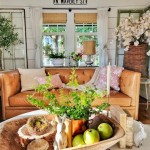```html
Modern Home Ideas: A Guide to Interior Decorating
Modern interior decorating is a dynamic field, constantly evolving to reflect contemporary lifestyles and technological advancements. It prioritizes functionality, clean lines, and a sense of openness, often incorporating natural light and sustainable materials. Understanding the core principles of modern design is crucial for creating a comfortable and aesthetically pleasing living space.
The modern aesthetic emphasizes simplicity and a lack of excessive ornamentation. This doesn't mean the space is sterile or devoid of personality. Instead, it focuses on carefully selected elements that contribute to the overall harmony of the room. Colors are often neutral, serving as a backdrop for textures and thoughtfully chosen accents. Furniture pieces are streamlined and often multi-functional, maximizing space and minimizing clutter.
One common misconception is that modern design is synonymous with stark minimalism. While minimalism can be a component of modern design, the latter encompasses a broader range of styles and influences. Modern interiors can be warm and inviting, incorporating natural elements and personal touches that reflect the homeowner's individual taste.
Understanding Space and Flow
A fundamental aspect of modern interior decorating is the effective use of space. This involves careful consideration of the room's layout, furniture placement, and the flow of movement within the area. The goal is to create a sense of openness and ease, avoiding overcrowding and unnecessary obstructions.
Open floor plans are a defining characteristic of many modern homes. These layouts combine living, dining, and kitchen areas into a single, unified space. This approach promotes social interaction and creates a more spacious feel. However, it's important to define distinct zones within the open space to maintain a sense of order and functionality. This can be achieved through the strategic placement of furniture, the use of area rugs, or subtle changes in flooring.
Furniture should be arranged to facilitate conversation and movement. Avoid blocking pathways or creating awkward bottlenecks. Consider the natural light sources and position furniture to maximize their impact. Mirrors can also be used to enhance natural light and create the illusion of more space. The scale of furniture is also important; oversized pieces can overwhelm a small room, while undersized items may appear insignificant in a larger space.
Vertical space is often overlooked in interior design. Utilizing walls for storage or decorative elements can free up valuable floor space. Shelving, artwork, and vertical gardens can add visual interest and personality without cluttering the room. Consider tall, narrow storage solutions to maximize vertical space, especially in smaller apartments or condos.
Color Palette and Material Selection
The color palette in modern interior decorating typically leans towards neutral tones, such as whites, grays, and beiges. These colors create a calming and versatile backdrop that allows for the introduction of accent colors and textures. Pops of color can be incorporated through artwork, accessories, or a statement piece of furniture.
The use of natural materials is also a key element of modern design. Wood, stone, glass, and metal are frequently incorporated to add warmth, texture, and visual interest. These materials can be used in furniture, flooring, wall coverings, and decorative accessories. The key is to balance these elements to create a cohesive and harmonious look.
Consider the textures of different materials when selecting items for the home. A combination of smooth and rough textures can add depth and complexity to the design. For example, a smooth leather sofa can be paired with a woven rug or a textured throw pillow. Similarly, the contrast between polished metal and raw wood can create a visually appealing effect.
Lighting plays a crucial role in shaping the mood and atmosphere of a room. Natural light is highly valued in modern design, so maximize the use of windows and skylights. Artificial lighting should be layered to provide both ambient and task lighting. Recessed lighting, pendant lights, and floor lamps are all common choices in modern homes. The color temperature of the light bulbs can also impact the overall feel of the room; warmer tones create a cozy atmosphere, while cooler tones can create a more energizing environment.
Incorporating Technology and Sustainability
Modern interior decorating often integrates technology seamlessly into the design. Smart home devices, such as automated lighting and temperature control systems, can enhance convenience and energy efficiency. Entertainment systems are often integrated with clean lines, hiding unsightly wires and components.
Sustainability is an increasingly important consideration in modern design. Eco-friendly materials, such as bamboo, recycled glass, and reclaimed wood, are becoming more popular. Energy-efficient appliances and lighting fixtures can help reduce energy consumption and minimize environmental impact. Choosing furniture made from sustainable sources is also a responsible choice.
The integration of technology should be subtle and unobtrusive. Avoid cluttering the space with excessive gadgets and wires. Consider using cable management solutions to keep cords organized and hidden. Smart home devices can be controlled through a central hub, streamlining the user experience.
Biophilic design, which focuses on connecting people with nature, is another trend gaining traction in modern interior decorating. Incorporating plants, natural light, and natural materials can help create a healthier and more relaxing living environment. Indoor plants can purify the air, reduce stress, and add a touch of greenery to the space.
Ultimately, modern interior decorating is about creating a functional, comfortable, and aesthetically pleasing living space that reflects individual style and values. By understanding the core principles of modern design and incorporating elements that resonate with personal preferences, it's possible to create a home that is both stylish and sustainable.
Consider the long-term impact of design choices. Investing in durable and timeless pieces can save money and reduce waste in the long run. Choose materials and finishes that are easy to clean and maintain. By making informed decisions, it's possible to create a modern home that is both beautiful and practical.
```
5 Amazing Modern House Design Ideas You Must See Livspace

10 Contemporary Interior Design Ideas Of 2025 Designcafe

45 Irresistibly Stylish Midcentury Modern Living Room Idea

Livingroom Ideas Decor Decorating Id Contemporary Living Room Luxury House Designs Open

Modern Interior Design To Transform Your Space Designcafe

15 Latest Interior Design Ideas For Your Home Luxury House Designs New

Modern Interior House Design Ideas You Can Implement Proficiency

Eight Stylish Options For An Interior Design Upgrade To Your Home

18 Stylish Homes With Modern Interior Design Architectural Digest

5 Amazing Modern House Design Ideas You Must See Livspace
Related Posts







